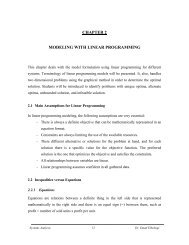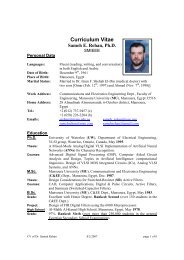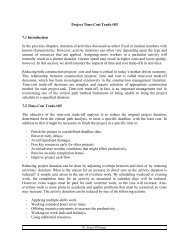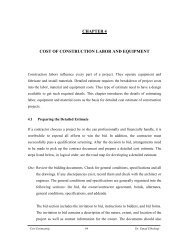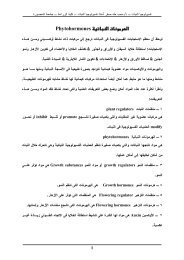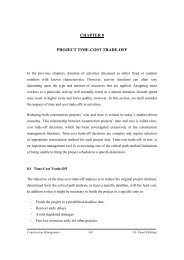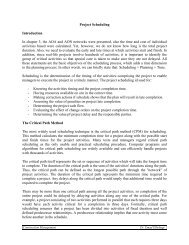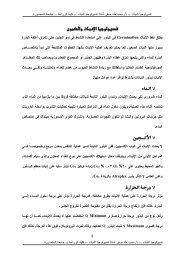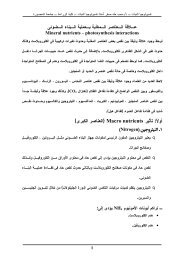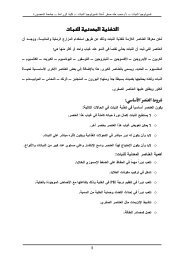Thyroid and Parathyroid
Thyroid and Parathyroid
Thyroid and Parathyroid
Create successful ePaper yourself
Turn your PDF publications into a flip-book with our unique Google optimized e-Paper software.
Innervation of the gl<strong>and</strong> is by sympathetic fibers from the superior <strong>and</strong> middle<br />
cervical sympathetic ganglia. The fibers enter with the blood vessels <strong>and</strong> are<br />
vasomotor in action. Parasympathetic fibers are derived from the vagus nerve <strong>and</strong><br />
. reach the gl<strong>and</strong> via branches of the laryngeal nerves<br />
Microscopically, the thyroid is divided into lobules that contain 20 to 40 follicles.<br />
There are roughly 3 × 106follicles in the adult male thyroid gl<strong>and</strong>. The follicles are<br />
spherical <strong>and</strong> average 30 mm in diameter. Each follicle is lined by cuboidal epithelial<br />
cells <strong>and</strong> contains a central store of colloid secreted from the epithelial cells under the<br />
influence of the pituitary hormone, thyroid stimulating hormone (TSH). The second<br />
group of thyroid secretory cells are the C cells or parafollicular cells, which contain<br />
<strong>and</strong> secrete the hormone calcitonin. They are found as individual cells or clumped in<br />
small groups in the interfollicular stroma, abutting between follicular cells. They are<br />
located in the upper poles of the thyroid lobes, reflecting their origin as<br />
neuroectodermal cells derived from the ultimobranchial bodies, <strong>and</strong> are part of the<br />
. amine containing precursor uptake decarboxylase (APUD) series described by Pearse<br />
Laryngeal Nerves<br />
It is important to note the close relationship of the thyroid gl<strong>and</strong> to the recurrent<br />
laryngeal nerves <strong>and</strong> the possible variations in the course of the recurrent nerves. The<br />
recurrent laryngeal nerves supply the intrinsic muscles of the larynx, <strong>and</strong> damage to<br />
one of them leads to ipsilateral vocal cord paralysis. Similarly, the external branch of<br />
the superior laryngeal nerve, which innervates the cricothyroid muscle, also is at risk<br />
during thyroid surgery. Damage of either nerve may result in a disability of<br />
. phonation<br />
Identification of the nerves, rather than attempting to avoid them, should be st<strong>and</strong>ard<br />
practice for the surgeon. The recurrent laryngeal nerves originate from the vagus<br />
nerves. On the right side, the recurrent nerve originates where the vagus nerve crosses<br />
the first part of the subclavian artery; the nerve loops under the subclavian artery <strong>and</strong><br />
ascends slightly obliquely to enter the larynx at the level of the cricoid cartilage <strong>and</strong><br />
posterior to the cricothyroid muscle. The left recurrent nerve branches from the vagus<br />
as it crosses the aortic arch <strong>and</strong> loops posteriorly around the ligamentum arteriosus<br />
before it ascends medially in the tracheoesophageal groove to enter the larynx<br />
opposite the contralateral nerve. The variable course taken by the recurrent nerves is<br />
demonstrated in Fig. 36-7. The right recurrent nerve is in the tracheoesophageal<br />
groove in 64 percent of people, compared to 77 percent on the left. The nerve is<br />
lateral to the trachea on the right in 28 percent of people <strong>and</strong> in 17 percent on the left.<br />
In a minority of people the nerve is anterolateral to the trachea (right 8 percent, left 6<br />
percent), exposing it to accidental division during subtotal lobectomy. A<br />
misconception is that the recurrent laryngeal nerves run behind the inferior thyroid<br />
artery, but this is true in only 53 percent of people on the right <strong>and</strong> 69 percent on the<br />
left. In others the nerve's course is anterior to the artery (right 37 percent, left 24<br />
percent), or between branches of the artery (right 7 percent, left 6 percent). Failure to<br />
. identify the course of the nerves can lead to accidental damage<br />
The recurrent laryngeal nerves are not always recurrent; in about 1 percent of people<br />
one of the nerves is nonrecurrent. This occurs almost exclusively on the right in<br />
association with a vascular anomaly of the right subclavian artery; rarely, it occurs on<br />
the left with dextrocardia or situs inversus. In these situations, the nerve arises from



